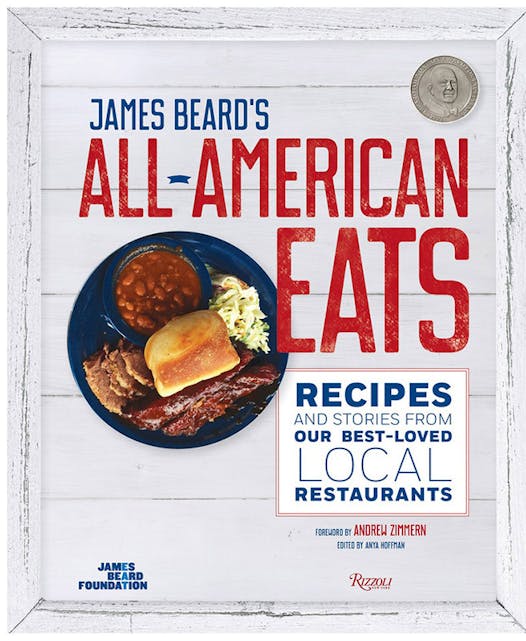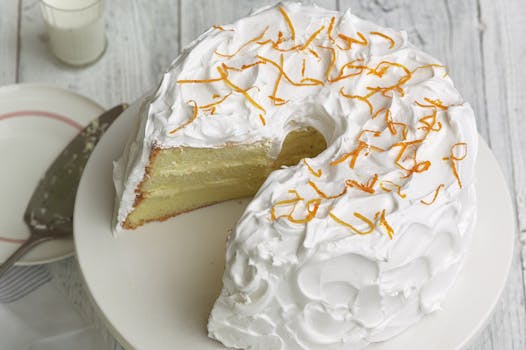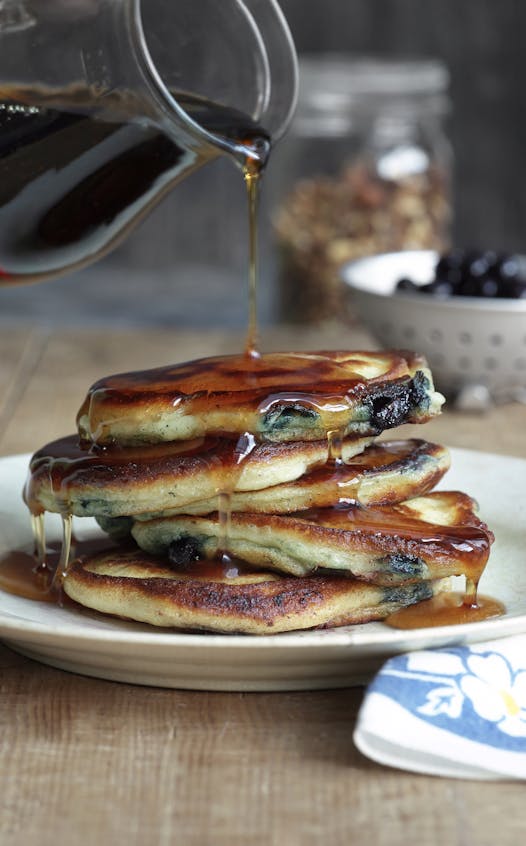My favorite part of the James Beard Foundation's annual awards gala — the so-called "Oscars of the food world" — are the America's Classics honors.
Since 1998, the culinary organization has honored 98 classic restaurants — from Joe's Stone Crab in Miami Beach to Helena's Hawaiian Food in Honolulu — with this prestigious award, which pays tribute to "restaurants with timeless appeal and that are beloved for quality food that reflects the character of their community."
Forget about fancy four-star establishments run by celebrity chefs. Nope, these are family-owned — frequently involving multiple generations — and often modest establishments, glowing with what's often a decades-in-the-making patina of collective affection.
At the annual gala awards ceremony (as seemingly endless as the Academy Awards), the most reliably bright spots are when the classics winners are recognized, frequently with heartfelt, tear-inducing speeches from the honorees. (The presentations are also accompanied by brief, illuminating videos; more than 40 are archived at http://tinyurl.com/hr2lh2v.)
The foundation is using its 30th anniversary to celebrate this extraordinary legacy with the release of "James Beard's All-American Eats" (Rizzoli New York, $40), a cookbook that vividly showcases the America's Classics fraternity.
Anyone in the mood for a road trip will find it enormously useful, since the material takes readers to 37 states and the District of Columbia, and highlights the local-color institutions that should be on every traveler's dining itinerary.
Paging through it revived happy memories of journeys past:
Feeling like a political insider over a serving of the spicy namesake dish at Ben's Chili Bowl (awarded in 2004) in Washington, D.C., or shucking steamed oysters and drinking cold beer, dockside, at Bowens Island Restaurant (2006) outside Charleston, S.C.
Being utterly enchanted by the ancient soda fountain and the sweet people at Lagomarcino's (2006) in Moline, Ill., while washing down a ham salad sandwich with a Green River soda and finishing with a hot fudge sundae.
Unwinding in the garden at Joe T. Garcia's Mexican Restaurant (1998) in Fort Worth with the requisite guacamole and margaritas, and taking a seat at a long table inside eclectic Irma's (2008) in Houston and marveling as it filled with plate after plate of colorful, fragrant homestyle enchiladas, chiles relleños and tacos.
Comparing neckties with the late Le Veau d'Or (2011) founder Monsieur Tréboux (his was by far the better) over coq au vin in New York City, then heading uptown for cheese blintzes at Barney Greengrass (2006). Or pretending to be an Old Hollywood big shot — over a towering pastrami sandwich — at Langer's Delicatessen-Restaurant (2001) in L.A.
The Midwest is well-represented in the classic: Al's Breakfast (2004) and Kramarczuk's (2013) in Minneapolis are included, along with the Pickwick (2007) in Duluth, Three Brothers (2007) and Watts Tea Shop (2011) in Milwaukee, Archie's Waeside (2015) in Le Mars, Iowa, and Breitbach's Country Dining (2009) in Sherrill, Iowa.
Also in the mix are 75 destined-to-become-classic recipes. I'm especially grateful for the inclusion of the Sunshine Cake from Watts Tea Shop, saving me the 700-mile round trip when the craving calls. And the formula for the blueberry-walnut pancakes from Al's Breakfast will come in handy when a morning detour to Dinkytown isn't possible.
The book is also peppered with memorable first-person recollections from honorees, each a valuable glimpse into the past. My Minnesota bias is showing here, but my favorite is from Al's co-owner Doug Grina.
His first observation is a trend note: When he first started working behind the restaurant's yellow linoleum counter in 1977, the clientele consumed a 12-oz. bottle of salsa a week. To meet today's demand, the kitchen prepares 4½ gallons of salsa each week.
And he's proud — as he should be — that his 14-seat, James Beard award-winning restaurant has stayed true to its populist prices.
"I actually feel that some of our better years have been during economic downturns, because people will stop going to more expensive restaurants and start coming to Al's," he wrote. "Another thing about us is that everybody who comes here has fun just watching us work and watching all the shenanigans that are going on. We make the experience more than just coming and having breakfast — it's a show, as well."
Rick.nelson@startribune.com
612-673-4757 Twitter: @RickNelsonStrib
Sunshine Cake
Serves 8 to 10.
Note: From Watts Tea Shop in Milwaukee, in "James Beard's All-American Eats."
For cake:
• 9 eggs, separated
• 1 c. granulated sugar, divided
• 1/4 c. water
• 1 c. cake flour, sifted
• 1 tsp. vanilla extract
• 1/4 tsp. cream of tartar
• 1/4 tsp. salt
For custard:
• 3/4 c. powdered sugar, sifted
• 3/4 c. whole milk
• 4 egg yolks, beaten
• 1 tsp. vanilla extract
• 1 c. (2 sticks) unsalted butter, room temperature
For frosting:
• 3 pasteurized egg whites
• Pinch of salt
• 1 1/3 c. granulated sugar
• 1/2 c. water
• 1 tsp. vanilla extract
• Grated zest of 2 large oranges, for garnish
Directions
To prepare cake: Preheat oven to 350 degrees.
In a bowl of an electric mixer on medium speed, combine 9 egg yolks, 1/2 cup granulated sugar and 1/4 cup water, and beat until light and fluffy. Reduce speed to low and add flour gradually, beating well after each addition. Add vanilla extract and mix until thoroughly incorporated.
In the bowl of an electric mixer fitted with a whisk attachment on medium-high speed, combine 9 egg whites, cream of tartar and salt, and beat until whites are stiff. Add remaining 1/2 cup granulated sugar and mix until peaks begin to form. Using a rubber spatula, fold egg white mixture into yolk batter. Pour batter into ungreased 10-inch tube pan. Bake until cake is light brown and a toothpick inserted into the center comes out clean, about 45 minutes. Remove from oven and transfer pan to a wire rack to cool completely.
To prepare custard filling: In a double boiler over gently simmering water, combine powdered sugar, milk and 4 egg yolks and cook, stirring constantly, until mixture thickens and coats the back of a spoon, about 4 to 5 minutes. Remove from heat and let cool to room temperature. Add vanilla extract and stir to combine.
In a bowl of an electric mixer on medium speed, beat butter until light and fluffy. Slowly add cooled custard to butter, beating well. Set aside.
To prepare frosting: In a bowl of an electric mixer fitted with a whisk attachment on medium speed, beat 3 pasteurized egg whites and salt until soft peaks form (it will take longer to whip the whites of pasteurized eggs than those of nonpasteurized eggs). Set aside.
In a medium saucepan over medium-high heat, combine 1 1/3 cups granulated sugar and 1/2 cup water and bring to a boil. Boil just until syrup spins a thread (it should reach 220 degrees on a candy thermometer).
With the mixer on medium speed, very slowly drizzle the hot sugar syrup into beaten egg whites. Beat constantly until frosting stands at stiff peaks and is spreadable. Add vanilla extract and mix well.
To assemble cake: Carefully cut cooled cake horizontally into 3 layers. On top of the first cake layer, spread a layer of half of custard filling. Top with middle cake layer and repeat. Top with final cake layer and frost the top and sides of cake with frosting. Sprinkle grated orange rind over top of cake before serving.
Nutrition information per serving of 10:
Calories540Fat26 gSodium150 mg
Carbohydrates68 gSaturated fat14 gCalcium63 mg
Protein10 gCholesterol290 mgDietary fiber0 g
Diabetic exchanges per serving: 1 bread/starch, 3½ other carb, 1 medium-fat meat, 4 fat.
Blueberry and Walnut Pancakes
Makes about 12 pancakes.
Note: This recipe must be prepared in advance. From Al's Breakfast in Minneapolis, and "James Beard's All-American Eats" by the James Beard Foundation, Rizzoli New York, 2016.
• 2 c. buttermilk
• 1 egg, beaten
• 1 3/4 c. flour
• 1 1/2 tsp. baking powder
• 1 tsp. baking soda
• 1 tsp. sugar
• 1/2 tsp. salt
• 3 tbsp. unsalted butter, melted, plus extra for cooking and serving
• 1/2 c. frozen blueberries
• 1/3 c. chopped walnuts
• Maple syrup
Directions
In a medium bowl, combine the buttermilk and beaten egg. In a separate large bowl, combine flour, baking powder, baking soda, sugar and salt. Add buttermilk mixture to flour mixture and stir to combine. Stir in melted butter. Allow mixture to sit for at least 15 minutes, or overnight, in the refrigerator.
When ready to cook, heat 1 tablespoon butter over medium heat in a heavy skillet or griddle. When butter is sizzling, pour about 1/4 cup of the batter per pancake onto the skillet, leaving space between the pancakes. (Depending upon the size of your griddle, it'll take 3 or 4 batches to make all of the pancakes. Be sure to add more butter to the griddle between each batch.)
Reduce heat to low and immediately place 5 or 6 frozen blueberries and 3 to 4 walnut pieces on each pancake. Cook until lightly brown, turning once with a spatula, about 4 minutes per side. Repeat with remaining batter. Serve with a pat of butter and a drizzle of maple syrup.
Nutrition information per serving (without syrup):
Calories176
Carbohydrates18 g
Protein4 g
Fat10 g
Saturated fat5 g
Cholesterol35 mg
Sodium350 mg
Calcium92 mg
Dietary fiber1 g
Diabetic exchanges per serving: 1 bread/starch, 2 fat.
King Crab Mac and Cheese
Serves 6 to 8.
Note: From St. Elmo Steak House in Indianapolis, in "James Beard's All-American Eats."
• 1 lb. ditalini or other small pasta
• 1/2 c. (1 stick) unsalted butter, divided
• 1/3 c. flour
• 4 c. (1 quart) half-and-half
• 1 c. heavy cream
• 1 tbsp. salt
• 1 tsp. ground white pepper
• 1/2 tsp. coarsely ground black pepper
• 1/2 tsp. freshly grated nutmeg
• 1/4 tsp. ground cayenne pepper
• 1 lb. smoked Gouda cheese, shredded (about 4 c.), divided
• 3/4 c. coarse breadcrumbs or panko
• 8 oz. chopped lump king crab crabmeat
Directions
Preheat oven to 350 degrees.
Bring a large pot of salted water to a boil. Add pasta and cook, stirring occasionally, until 2 minutes before al dente (you want to slightly undercook pasta as it will continue cooking while in the oven). Drain and rinse until cool. Set aside.
In a large saucepan over medium heat, melt 6 tablespoons (3/4 stick) of the butter. When butter is melted, remove pan from heat and stir in flour. Place pan back on heat and cook for 1 to 2 minutes, whisking constantly. Add half-and-half, cream, salt, white pepper, black pepper, nutmeg and cayenne pepper. Continue to cook, whisking constantly, until thickened and smooth. Add 2 cups of shredded Gouda and stir until mixture is thoroughly blended and cheese has melted, about 3 minutes. Remove from heat and set aside.
In a separate bowl, mix together breadcrumbs and remaining 2 cups shredded Gouda.
Return pasta to (empty) cooking pot. Add cream sauce and stir to combine. Use 1 tablespoon butter to grease a 2-quart baking dish. Spoon pasta into prepared baking dish and top with breadcrumb mixture. Place in oven and bake until top is golden brown, breadcrumbs are toasted and sauce is bubbling, about 40 minutes.
Meanwhile, in a large skillet over low heat, gently heat remaining 1 tablespoon butter. Add crabmeat, season with a pinch of salt, and sauté just until heat through, about 2 minutes. Remove from heat and set aside.
When macaroni and cheese is done, remove from oven and let stand for 2 minutes. Top with warm crabmeat and serve.
Nutrition information per serving of 8:
Calories860Fat52 gSodium1750 mg
Carbohydrates64 gSaturated fat32 gCalcium590 mg
Protein34 gCholesterol200 mgDietary fiber3 g
Diabetic exchanges per serving: 4 bread/starch, 3 high-fat meat, 5½ fat.
Ham Salad
Makes about 2 cups, enough for 4 sandwiches.
Note: From Lagomarcino's in Moline, Ill. "The meat closest to the bone is used to make this lunchtime staple, which is served as a sandwich on homemade Swedish rye bread," write the editors of "James Beard's All-American Eats." "Ask your butcher to grind cooked ham for you, or use a food processor with the grinder attachment to grind leftover ham at home."
• 1 1/2 c. cooked ground ham
• 1 celery rib, finely chopped (about 1/4 c.)
• 1/4 c. sweet pickle relish
• 1/2 c. mayonnaise, or more if needed
• Salt and freshly ground black pepper, to taste
Directions
In a medium bowl, combine ham, celery and relish, and stir to combine (this step can be done up to 2 hours before serving). Just before serving, add mayonnaise and mix thoroughly. Season to taste with salt and pepper, adding more mayonnaise if desired.
Nutrition information per ½-cup serving:
Calories370Fat29 gSodium1690 mg
Carbohydrates6 gSaturated fat6 gCalcium14 mg
Protein21 gCholesterol66 mgDietary fiber0 g
Diabetic exchanges per serving: ½ other carb, 3 lean meat, 4 fat.
Corn Fritters
Makes about 2 dozen fritters.
Note: From Archie's Waeside in Le Mars, Iowa, in "James Beard's All-American Eats."
• Vegetable oil for deep frying
• 1 egg
• 1/3 c. sugar
• 1/2 tsp. salt
• 3/4 c. plus 2 tbsp. canned cream corn
• 1/2 c. plus 2 tbsp. 2 percent milk
• 2 c. flour
• 1 tsp. baking powder
Directions
Pour 2 inches of vegetable oil into a Dutch oven over medium-high heat, or use a deep fryer. Heat oil to 325 degrees
In a large bowl, beat egg. Add sugar and salt and mix well. Add creamed corn and milk and stir to combine. Add flour and baking powder and mix until just blended (do not overmix after adding flour, or dough will be stiff).
Working in batches, and being careful not to crowd the fryer, drop dough by rounded tablespoons into hot oil and cook until fritter is brown on all sides and a fork inserted into the dough comes out clean, about 4 to 6 minutes. Drain on paper towels and serve hot.
Nutrition information per serving:
Calories90Fat4 gSodium100 mg
Carbohydrates13 gSaturated fat1 gCalcium22 mg
Protein2 gCholesterol8 mgDietary fiber0 g
Diabetic exchanges per serving: 1 bread/starch, 1 fat.




